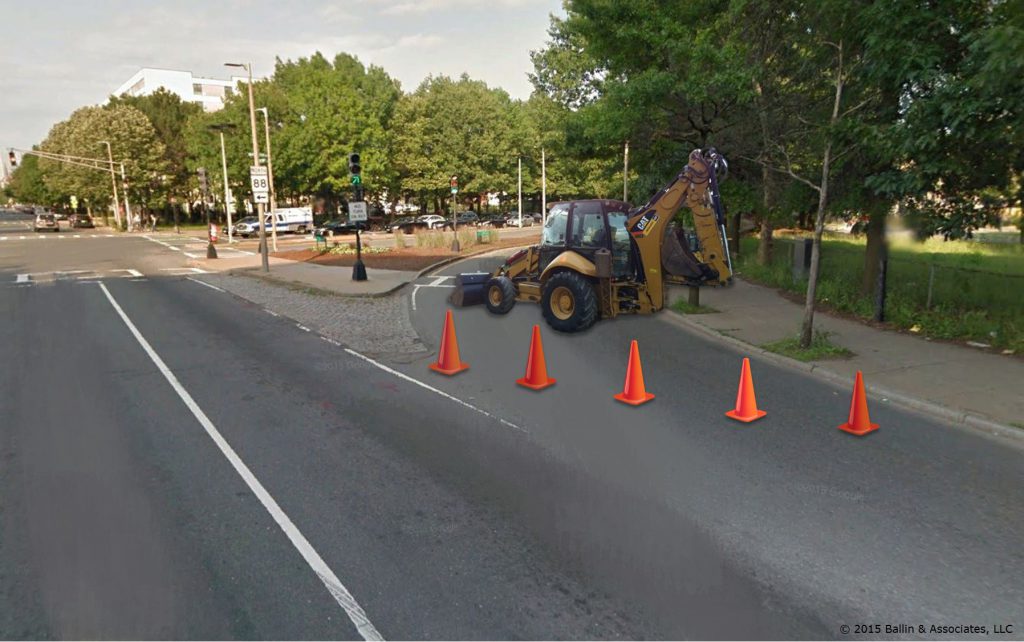 A contractor is doing construction work in a right turn lane at a busy intersection. The contractor decides to close off the right turn lane using some cones. Debbie Driver approaches the intersection. She intends on using the right turn lane, as she does every day on her way home from work. There are no advance warning signs about the closed right turn up ahead. There is no one to direct Ms. Driver past the closed right turn and through the intersection. The only detail officer hired by the contractor is farther up the road directing traffic away from the workers and heavy machinery.
A contractor is doing construction work in a right turn lane at a busy intersection. The contractor decides to close off the right turn lane using some cones. Debbie Driver approaches the intersection. She intends on using the right turn lane, as she does every day on her way home from work. There are no advance warning signs about the closed right turn up ahead. There is no one to direct Ms. Driver past the closed right turn and through the intersection. The only detail officer hired by the contractor is farther up the road directing traffic away from the workers and heavy machinery.
Surprised by the closed right turn, Ms. Driver takes a sharp right turn around a traffic island. The turn is too severe an angle. Ms. Driver’s tires run up along a median. She veers off the median and loses control of her car. She hits the officer. The officer suffers injuries to his knees, back and head. The officer was not able to return to work. Despite several surgeries, he has constant knee pain and the symptoms from his head injury continue to persist.
The contractor blames Ms. Driver, telling the State Police that other drivers made the sharp right turn all day without incident. The State Police cite Ms. Driver. It makes no investigation into the contractor’s temporary traffic control plan, or lack thereof.
We filed a lawsuit against the contractor based on the lack of temporary traffic control planning for the closed right turn: In particular, the failure to provide advance warning and the failure to hire an appropriate amount of officers to direct traffic at this busy intersection. The contractor’s crew admitted during depositions that the right turn had just been closed and that Ms. Driver was actually the first one to attempt the sharp right turn. The crew also testified how Ms. Driver looked confused and panicked as she made the sharp right turn. The contractor admitted it was required to provide advance warning signs about the road closure but that it had failed to do so. It also admitted that it could have hired more police officers to direct traffic.
While the lawsuit also included Ms. Driver, it was the contractor that set the stage for the crash. It was the contractor, not Ms. Driver, which failed to prepare a temporary traffic control plan for the road closure. Prior to trial during a mediation the case settled for $1.95 million. The contractor finally took responsibility for the crash.
Each year 40,000 people are injured or killed in roadway work zones. Construction companies needlessly put us all in increased danger of being injured or killed in a crash when they do not properly plan out the work zone. Federal and State regulations require companies that work on our roads to prepare temporary traffic control plans; however, there is frequently no planning beyond putting out a few cones alongside the work vehicle.
Officers injured on or off duty should consult with us early on, so we can determine whether you have a viable case and for you to learn about your rights.
– Steven M. Ballin, Esq.
